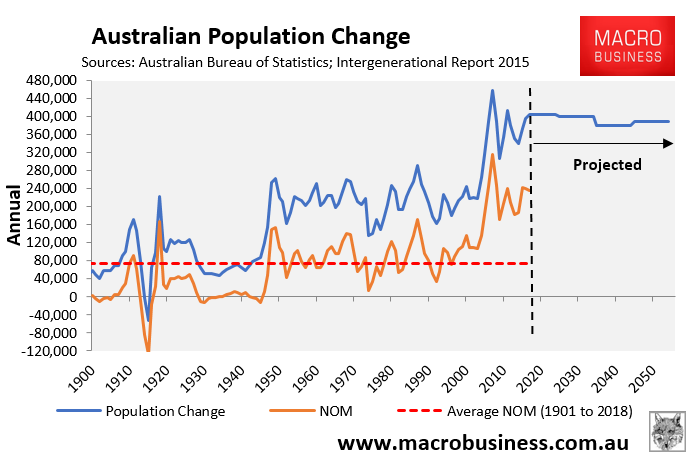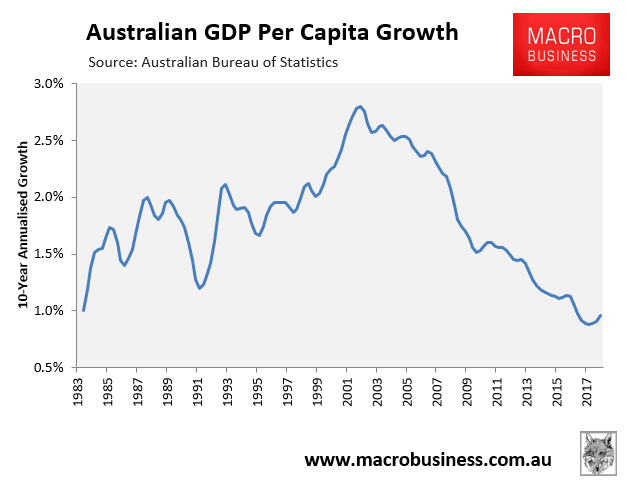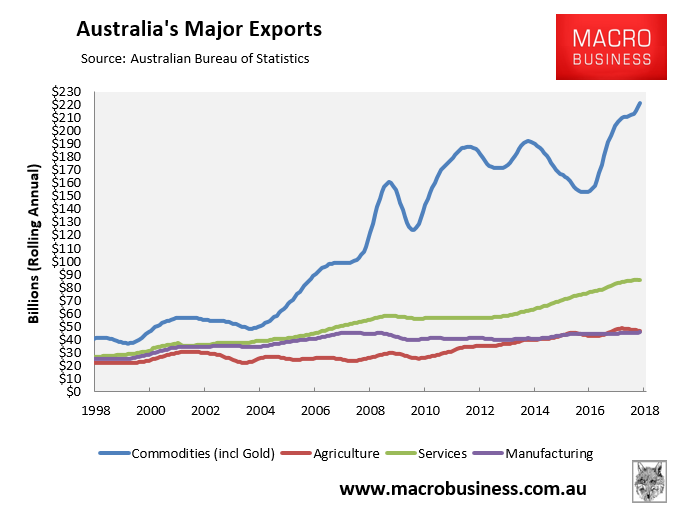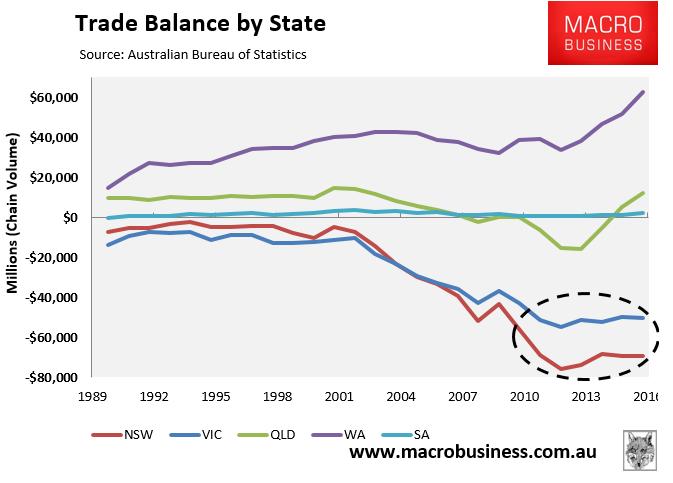
In the wake of the tiny fall in net overseas migration (NOM) yesterday, which remains at more than triple the historical average (see above chart), the Housing Industry Association (HIA) had a good old fashioned sook, via media release:
“Changes to visas for skilled workers have delivered an immediate hit to Australia’s population growth,” said Geordan Murray, HIA Principal Economist.
ABS data released today shows that Australia’s annualised population growth rate slowed for the fourth consecutive quarter.
“Australia’s overseas migration fell by 9 per cent since changes to visa requirements came into force in April 2017, slowing the population growth rate to 1.6 per cent,” Mr Murray added.
“In April 2017, Australia introduced a range of visa changes which have been successful in reducing the number of skilled migrants arriving in Australia.
“The current phase of Australia’s 28 years of continuous economic growth is built upon the arrival of skilled migrants. Skilled migration is necessary to offset the impact of our aging population.
“Looking domestically, states such as New South Wales and Victoria that have benefitted the most from overseas migration over recent years are now seeing population growth rates slowing.
“The slowing rate of population growth, while it remains high for a developed economy, will contribute to slower growth of household consumption.
“This means slower growth in sectors such as retail and residential building. Given that these two sectors are amongst the nation’s largest employers the risks presented a decline in population growth should not be underestimated,” concluded Mr Murray.
This is closed economy thinking by the HIA. The world has 7.4 billion people. We don’t need to import them to sell to them.
Sure, lower immigration will lower aggregate economic growth, since less inputs in people means less outputs in GDP. So what? It’s not like Australia’s growth in GDP per capita would be effected, which has collapsed since the immigration floodgates were thrown open:

Lower immigration would also reduce one of the major drags on productivity: rising infrastructure bottlenecks and congestion; would lower the Australian dollar (other things equal), rebalancing the economy away from ponzi growth towards productive tradeable growth; it would help to lift wages; and would improve Australia’s current account, since Australia would import far less and the nation’s mineral wealth (and exports) would be shared among less people:


The truth is mass immigration promotes a particular type of growth, concentrated in urbanisation and household debt, and associated sectors benefit. This has its limits, as we are already seeing in debt stress everywhere, as it benefits the few (like the HIA) over the many.
But it’s not the only model of growth. Far from it. Productivity enhancement and competitiveness are a better model over the long run as they lower debt while boosting incomes per capita, are more meritocractic, and send the 40% of the economy that is tradable into overdrive.

